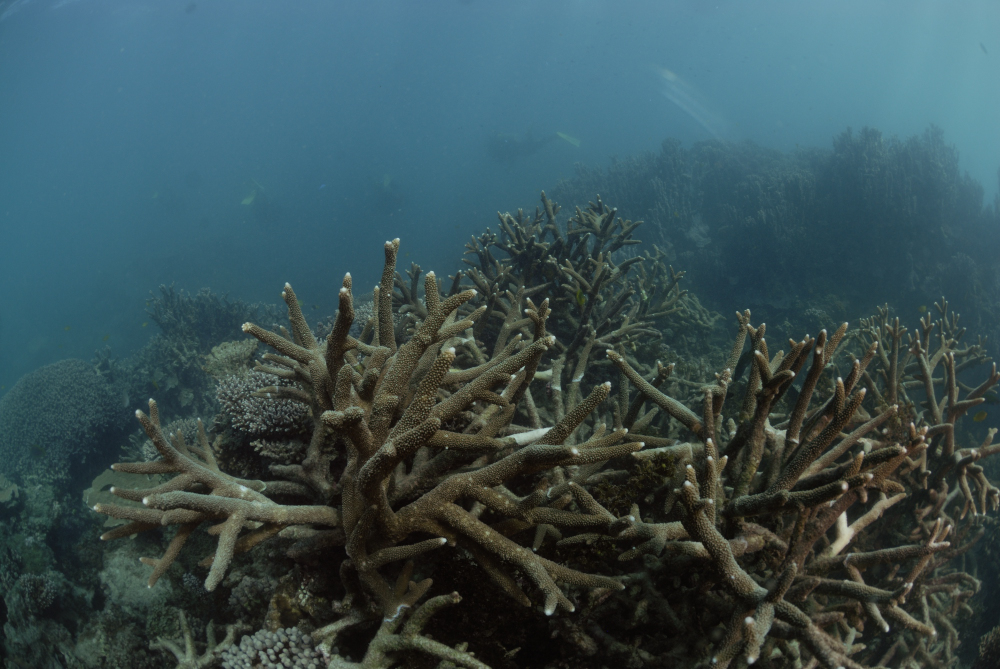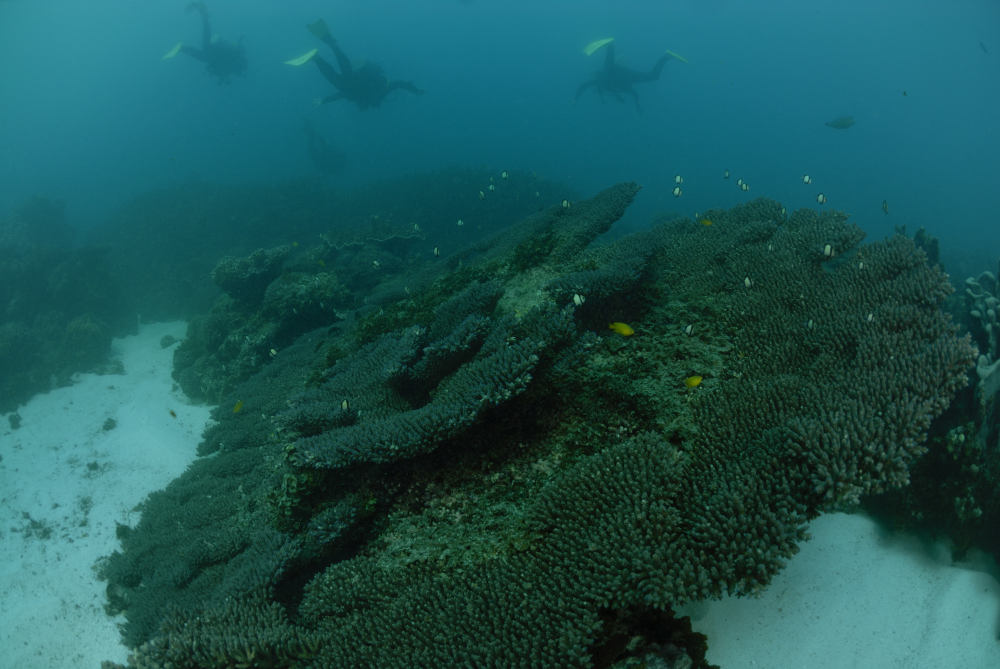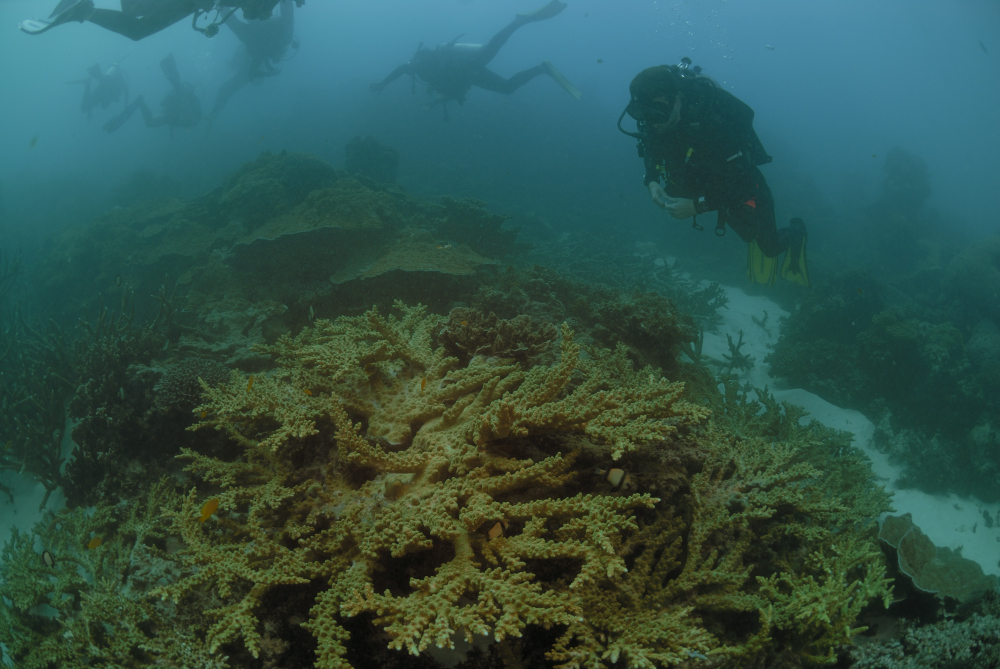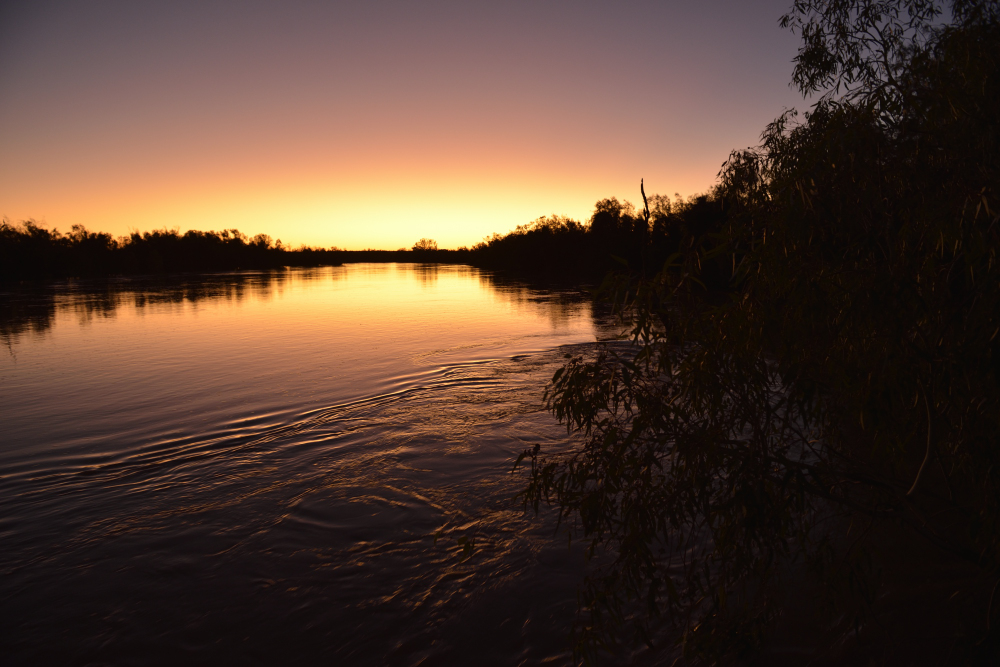ET Phone home & the sun got corona (not virus)
On our hike in Kalbarri National Park, we strike up a conversation with a German woman. We walk and talk about loose and firm and tell that we are heading north to Exmouth.
Well.. she says "are you going to go up and see the solar eclipse"?
We were completely unaware that there was a total solar eclipse in Exmouth in just 4 days. It's a bit crazy, so now we have to make sure we're at the right time - right place. What a coincidence, luck follows the crazy.
The luck doesn't even stop here. We drive into the town of Carnarvon - so we can have our clothes washed.
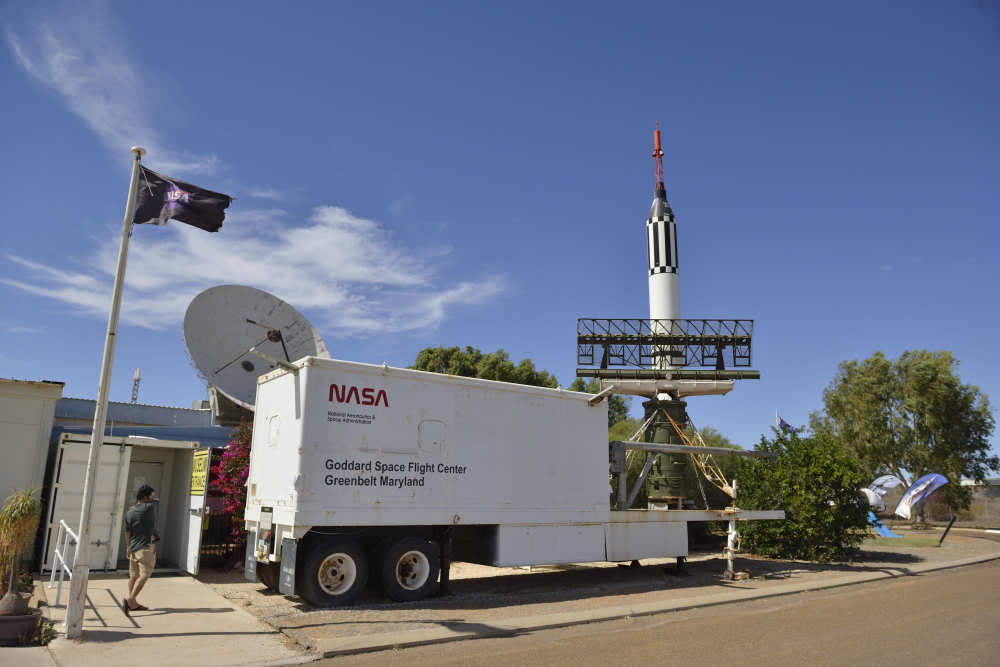
Suddenly, Johnny recognizes a large satellite dish from a YouTube video. It is the that was used for communication, at the moon landing in 1969. A museum has been made by the satellite dish, and in this grim sun and heat, it is extremely attractive with air conditioning and adventure. There are many props from that time. All kinds of technical equipment, which we don't have to think about, but it's fun to see. Carnarvon was very well placed for lunar communications and both the Gemini and Apollo missions were carried out with their help.
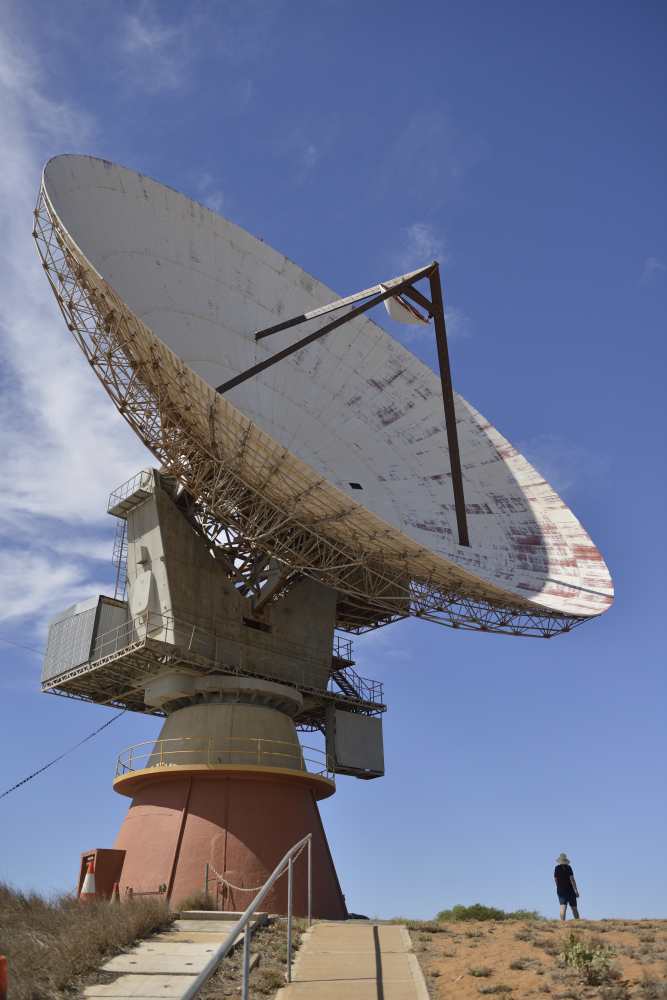
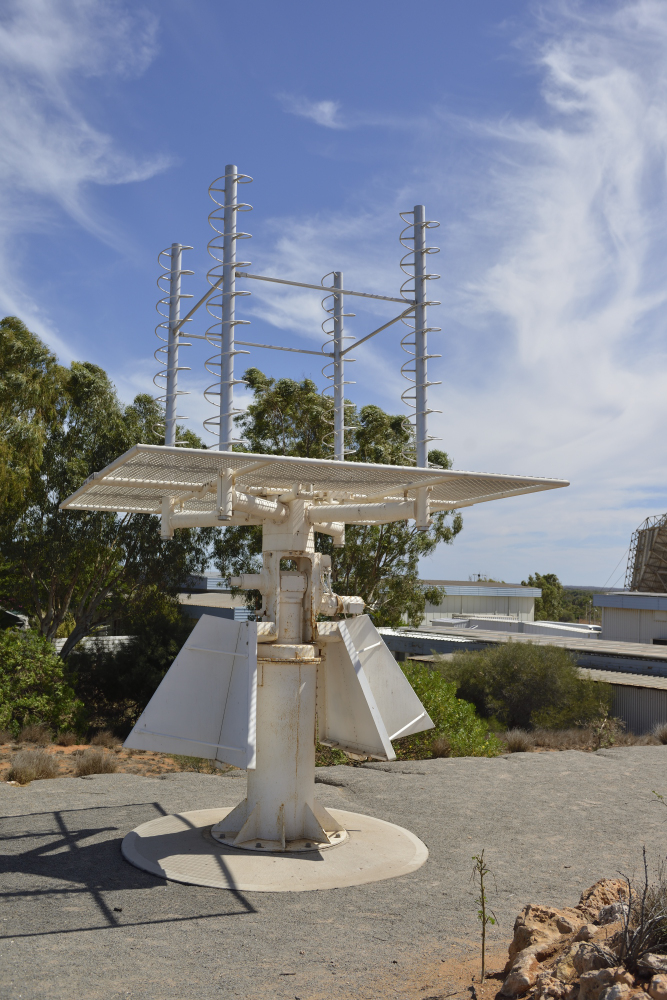
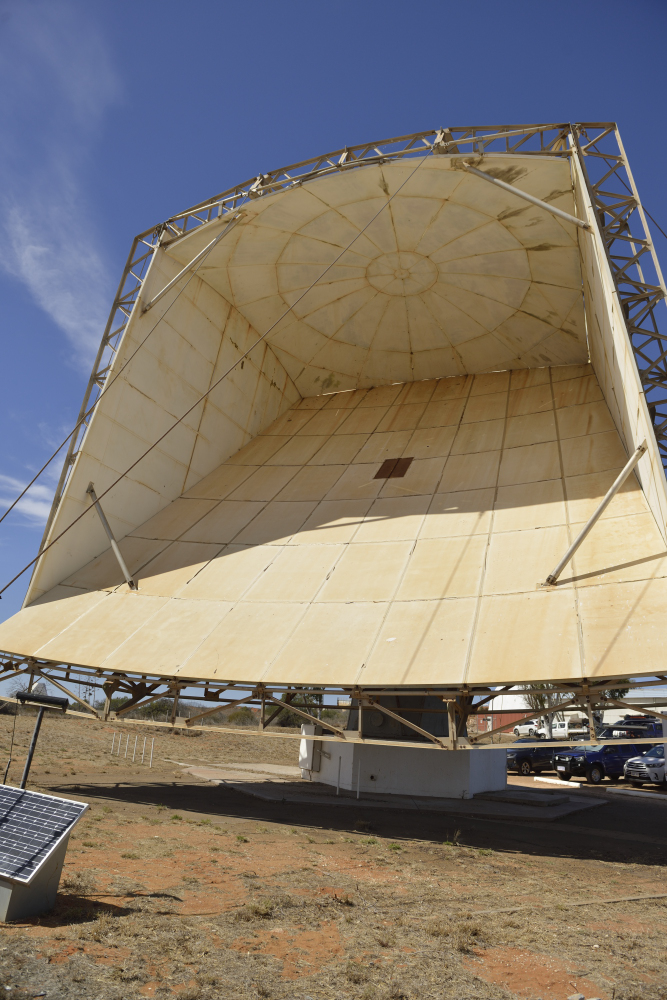
Outside the city, road users are warned on large light boards that a major event is underway. There is still over 300 km to Exmouth, so it is in good time. You have to give them that, no one can say that they were not warned in good time. It is estimated that around 20,000 people will be in Exmouth for the solar eclipse. So we are quite excited about the traffic situation, but on our way up there we don't meet many cars.
Extra campsites have been made for the many guests, but everything is sold out. However, there is one option called camping for 120 dollars a day (550 DKR) and you must book at least 4 nights. We are not on board with that. It amounts to gross exploitation of the situation. The police patrol intensively throughout the city. We have seen more police in Exmouth in 1 day than we have in the whole of Australia in 7 months. Peace be with it.
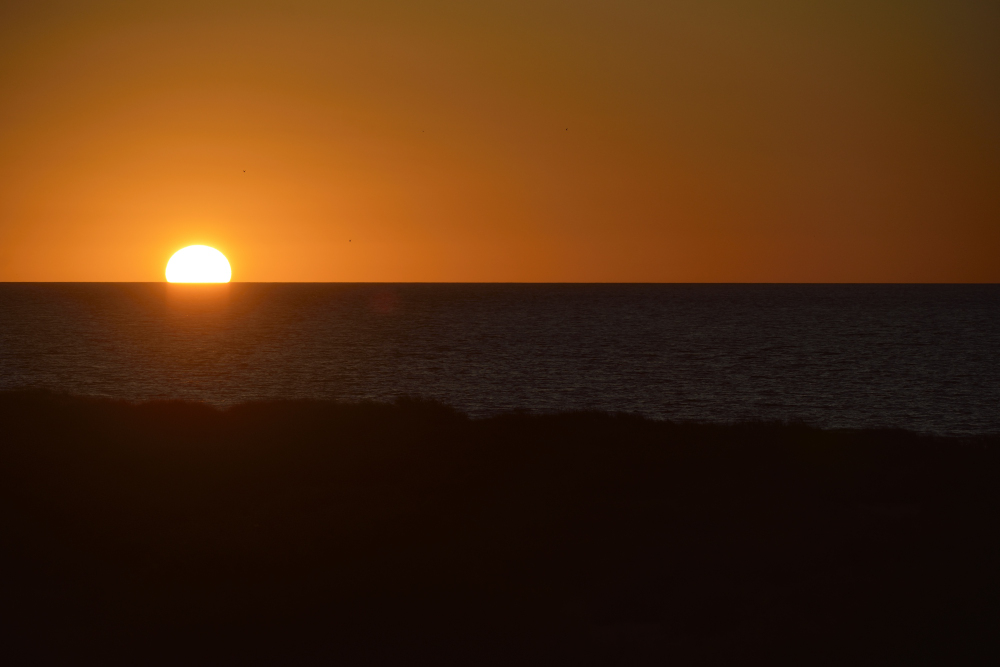
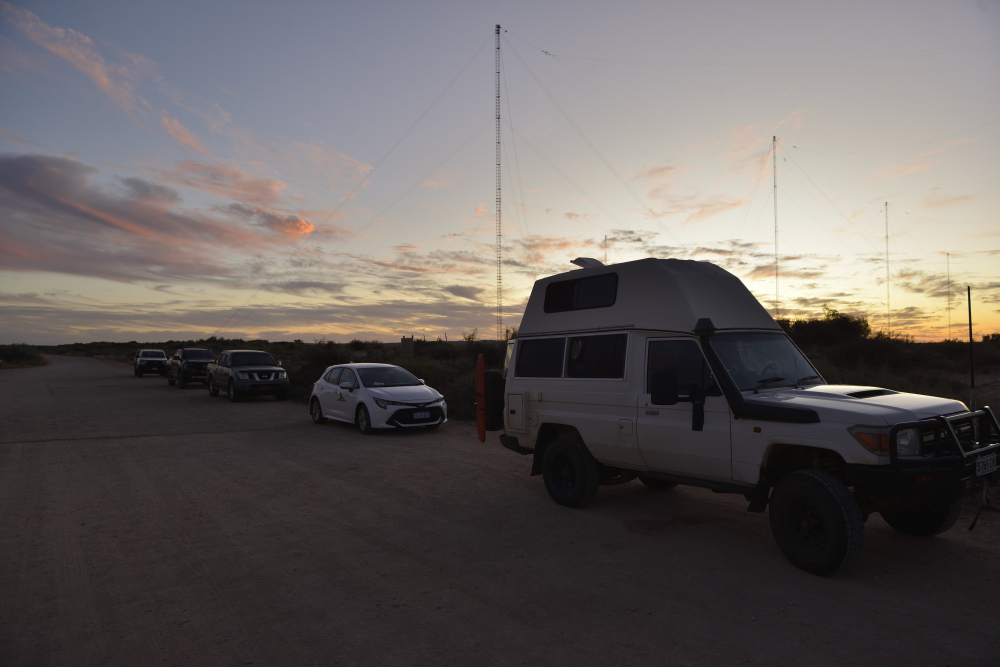
We get up early and drive down to a parking lot by the beach. There is a small cafe here, and a nice place to watch the solar eclipse. We can see that the light is slowly dimming, people crowd together and look up at the sun. The second the sun is completely covered, cheers and applause erupt. It goes lightning fast. We had otherwise read that the sun would be completely covered for a minute, but that probably doesn't quite fit. It gets completely dark and the sun is black with a luminous corona. It's quite spectacular to look at and we wish it lasted a bit longer. But after a short time it becomes bright again, and then it's over. Exmouth has been preparing for 3 years, for the 30 second natural phenomenon. It was definitely worth the trip and we are glad to have experienced it.
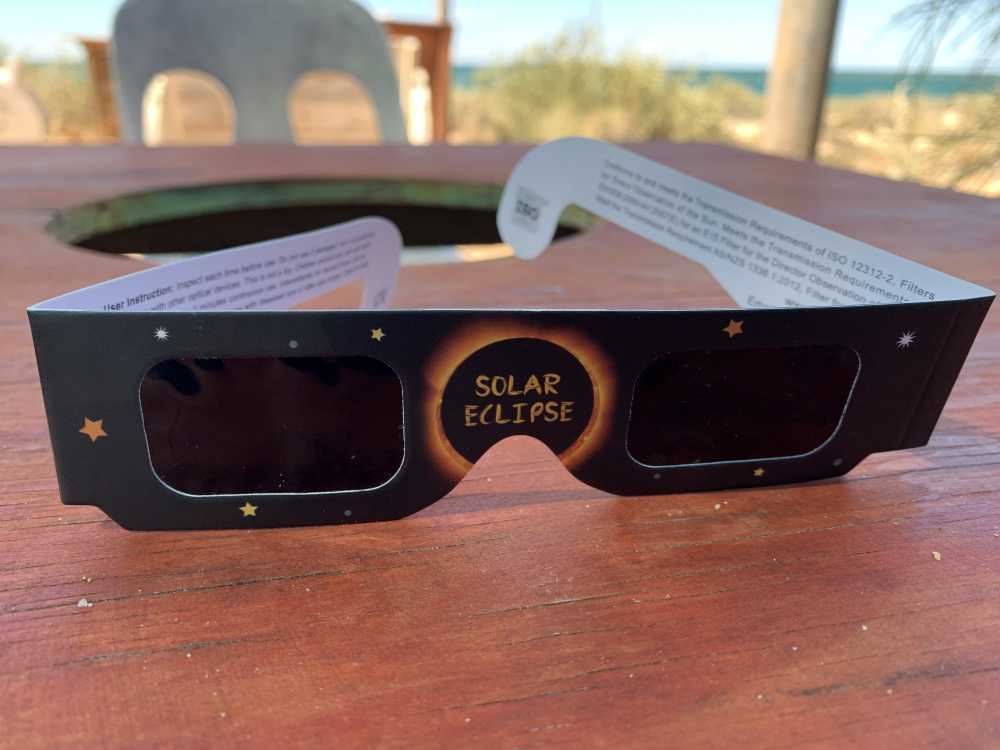
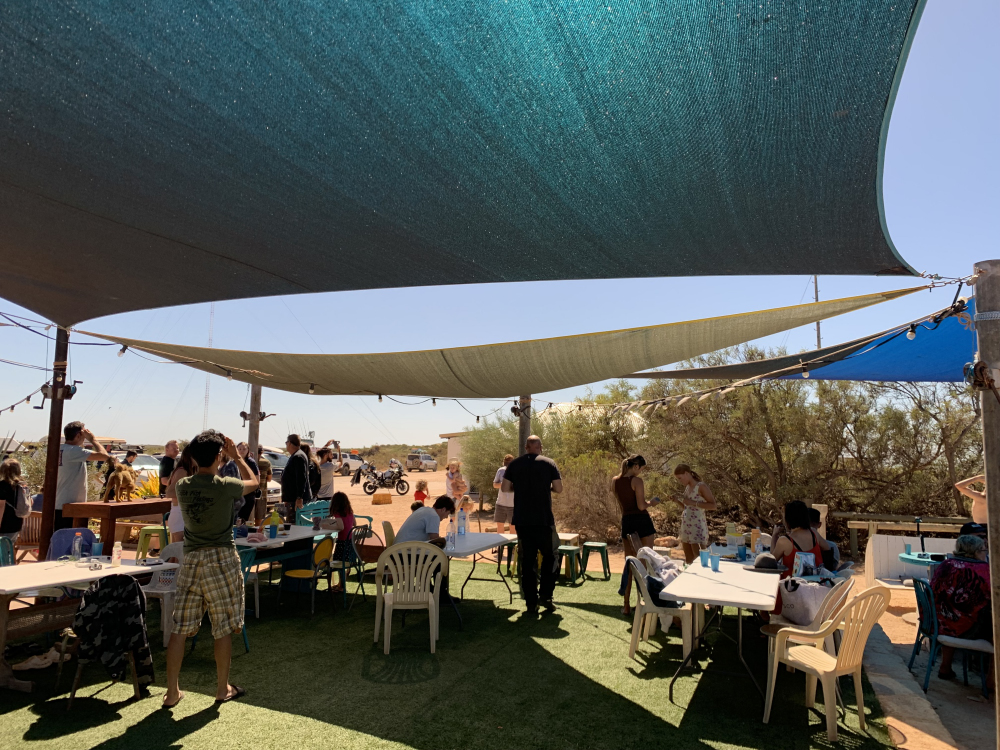
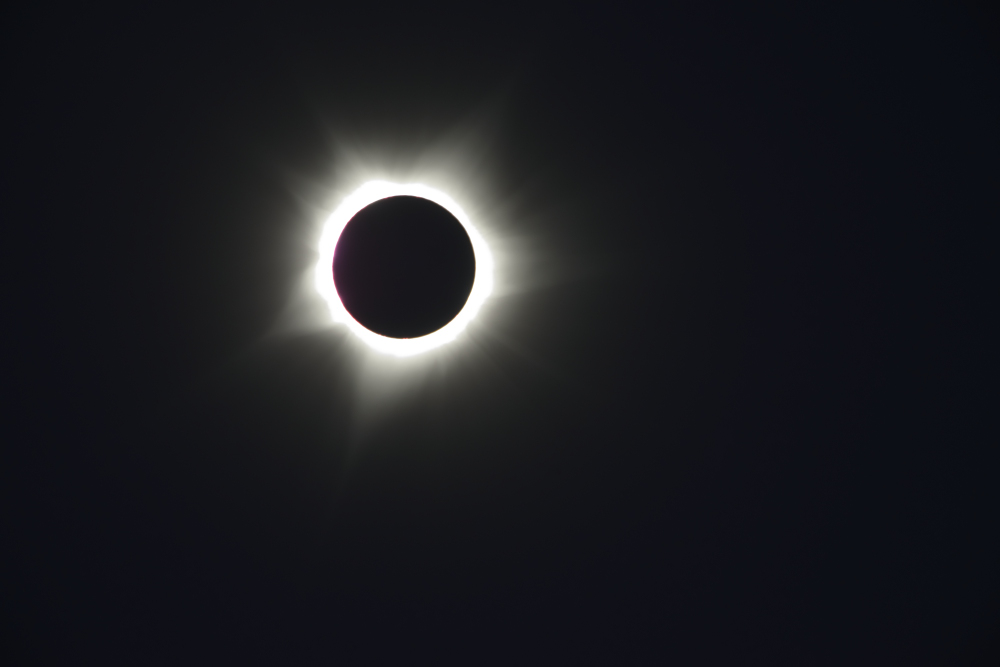
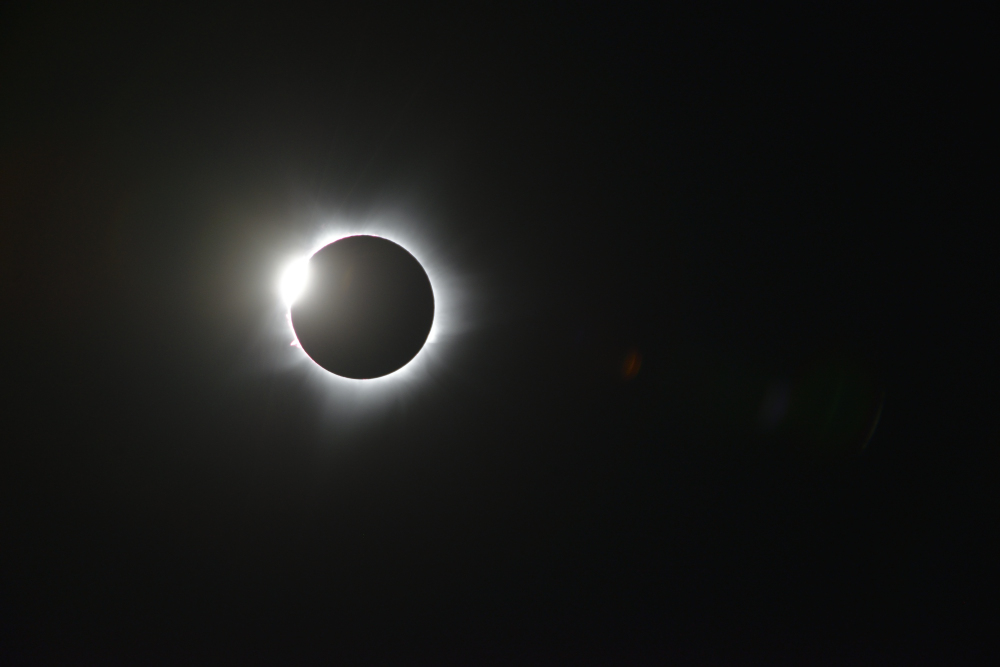
On the other side of the peninsula where Exmouth is, there are coral reefs. Ningaloo reef. We drive down the beach in the Cape Range National Park, and Johnny jumps into the blue wave a few times, just to check how the reef looks. There's not much to look forward to, so we continue towards Coral Bay.
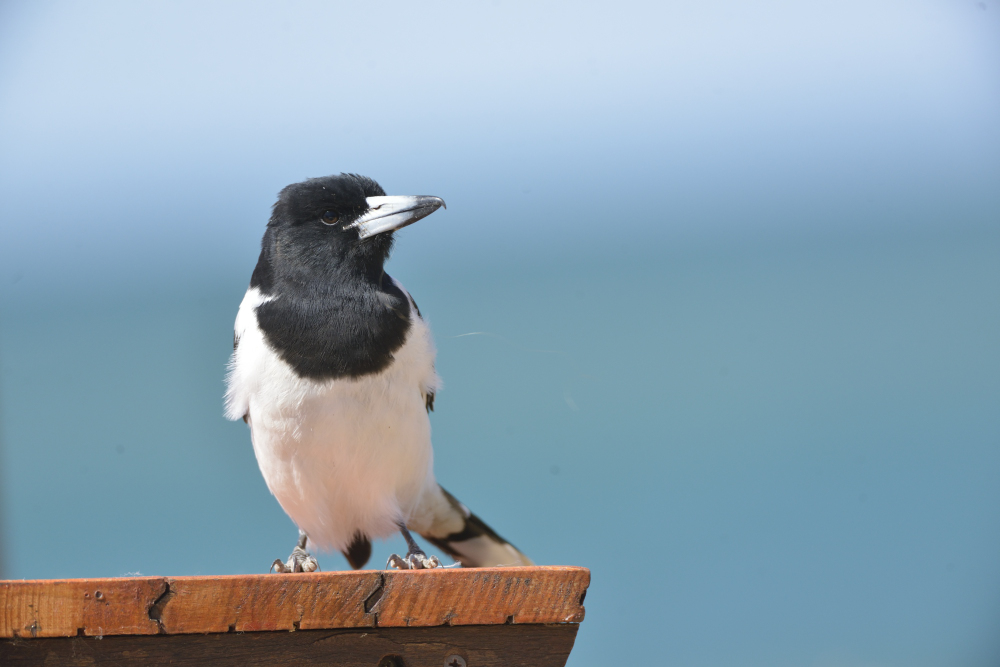
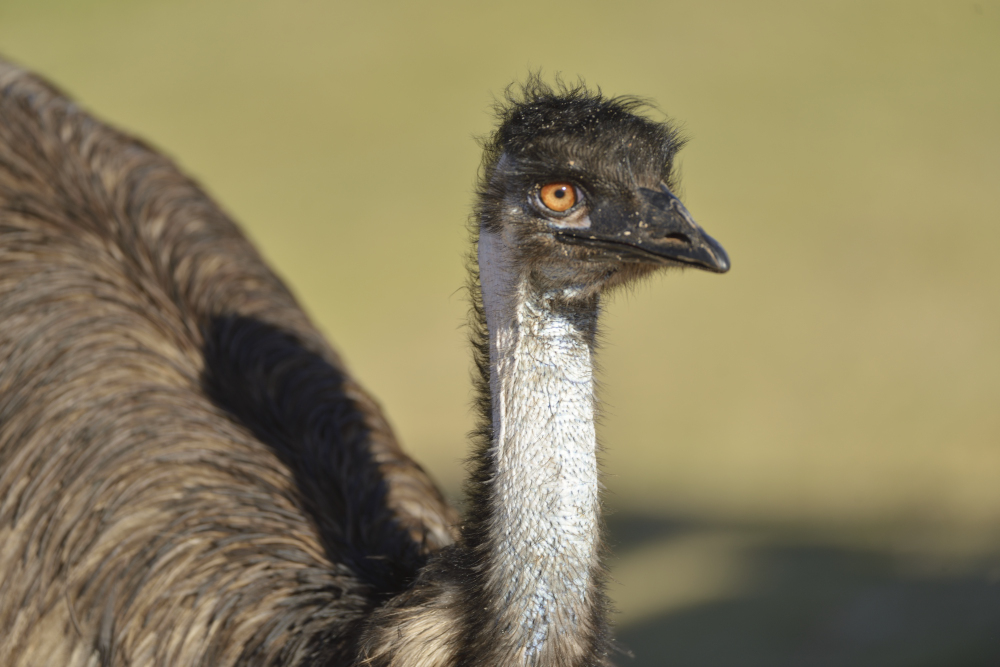
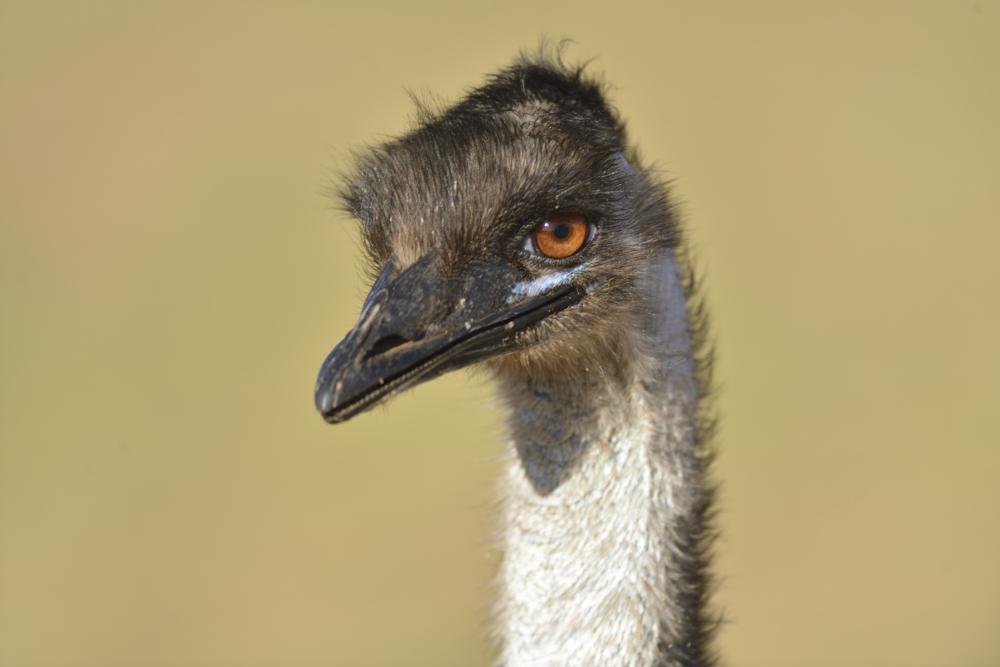
On the way we pass a huge area with large red termite nests. There are really many and they stand and look like haystacks, spread over a large area.
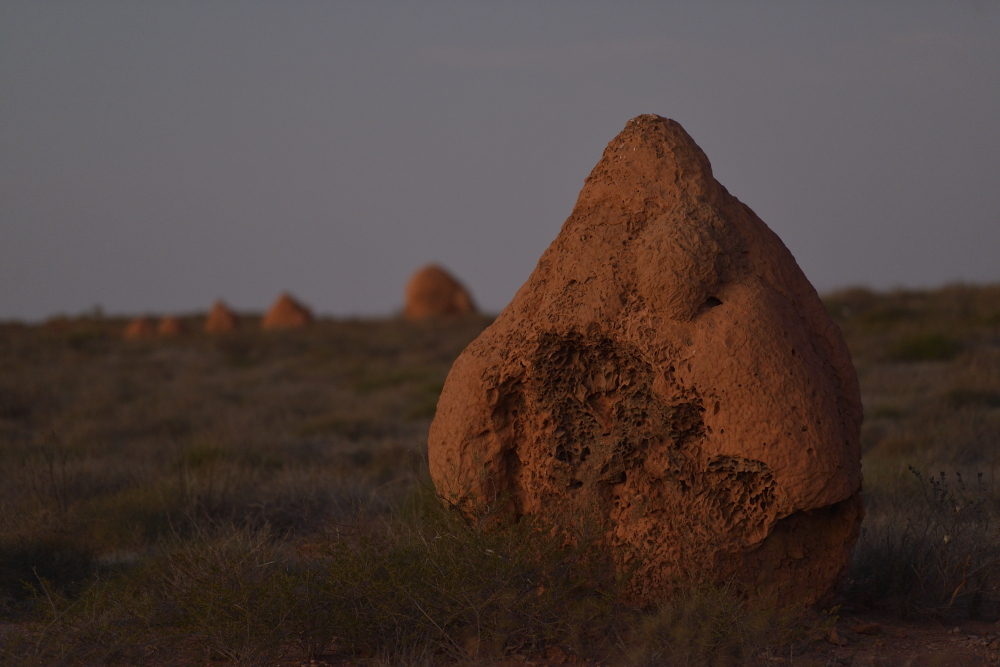
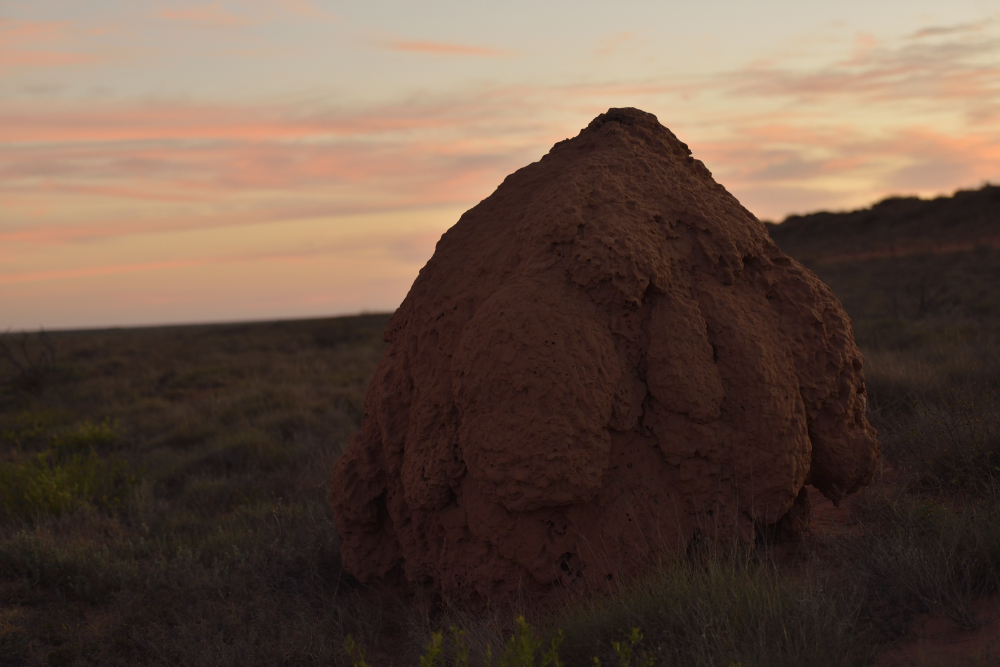
Coral Bay is an artificial city that lives entirely on water tourism. Johnny jumps into the blue wave again – to see the famous Ningaloo Reef… but is greeted by a dead reef.
It is clear to look at the structure that it has been large, varied and very accessible... once... But now there is a sad sight with the calcareous skeleton left and 2-3 cm thick algae growth on what should be alive. A few years ago there was an unfortunate coincidence, just as coral spawning was going on - then there was a wind direction which blew all the material into a sand cove. There it was confined until the process of decay started and it caused massive oxygen loss in the bay. One hopes that nature can recover - but it will take time.
With slightly slim hopes, a day's diving was booked, out on the outermost part of the reef...
Fortunately, it was a better experience - the depth was modest, visibility on shallow water dives is often limited when the ocean swells constantly wash over the barrier reef - but the coral structure was intact and alive - phew. After 30 years of diving, we finally managed to experience an active cleaning station for sharks. 20-30 larger individuals circulated throughout – it was nice to see something other than worry.
